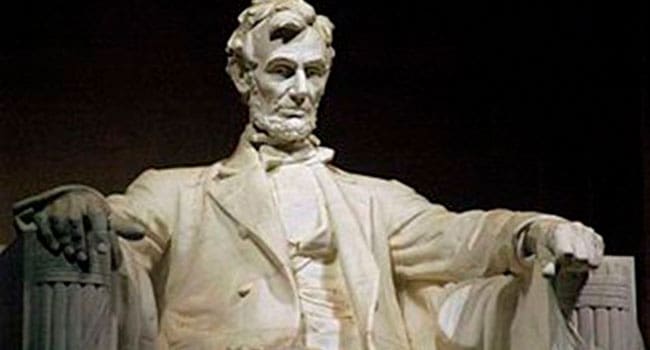 Frantic officials in the American south are joining with the Taliban and Islamic State as the latest group to destroy memorials to the past. Specifically, they are tearing down statues in praise of the Confederacy.
Frantic officials in the American south are joining with the Taliban and Islamic State as the latest group to destroy memorials to the past. Specifically, they are tearing down statues in praise of the Confederacy.
We might well examine the racist speech of Civil War-era politicians to see what motivates the iconoclasts of today to act against stone images. Here’s an example to consider:
”There is a natural disgust in the minds of nearly all white people to the idea of indiscriminate amalgamation of the white and black races. … A separation of the races is the only perfect preventive of amalgamation, but as an immediate separation is impossible, the next best thing is to keep them apart where they are not already together. If white and black people never get together in Kansas, they will never mix blood in Kansas.”
Here’s another:
“I am not, nor ever have been, in favour of bringing about in any way the social and political equality of the white and black races; I am not nor ever have been in favour of making voters or jurors of Negroes, nor of qualifying them to hold office, nor to intermarry with white people … there is a physical difference between the white and black races which I believe will forever forbid the two races living together on terms of social and political equality. And inasmuch as they cannot so live, while they do remain together there must be the position of superior and inferior, and I, as much as any other man, am in favour of having the superior position assigned to the white race.”
Those statements – offensive to modern ears – emerged from the lips of Abraham Lincoln, whose monument in Washington, as of this moment at least, remains untouched and whose portrait still adorns America’s $5 bill.
The supreme expression of sculpted American shrines is Mount Rushmore in South Dakota, with its giant heads of George Washington, Thomas Jefferson, Abraham Lincoln, and Theodore Roosevelt. Two of those were slave owners, one was in favour of deporting black Americans to Africa, and the other spoke of native Americans as “squalid savages” whose lands had to be taken by the white race.
You could fill volumes with the uncomfortable statements uttered in the past by people whom we now revere. Mahatma Gandhi objected to people of his race sharing a railway compartment with the black African whose sole ambition, he thought, was “to collect a certain number of cattle to buy a wife with and, then, pass his life in indolence and nakedness.”
Liberal icon Franklin D. Roosevelt appointed a former member of the Ku Klux Klan to the Supreme Court and once told his attorney general who was seeking to talk to him about a racial incident in the south, “I warned you not to call me again about any of Eleanor’s n—–s. Call me one more time and you are fired.”
Saskatchewan Premier Tommy Douglas, subject of a laudatory statue in Weyburn, in the same year that Adolf Hitler passed Nazi eugenics legislation stated that the immoral and the feeble-minded of Canada should be prevented from breeding and that a test of genetic fitness should be required of all those seeking a marriage licence.
Louis Riel, honoured by two statues in Winnipeg, committed the now-unforgivable act of teaching in an Indian residential school and opined that the Blackfoot and Blood First Nations “were nothing but savages.”
The past is a foreign country, it has been said, and they do things differently there. We commit the historical fallacy of ‘presentism’ when we insist that figures of bygone days be judged by our prejudices. Those who object to the statues to Robert E. Lee or Stonewall Jackson see them as bronzed hymns to slavery; those who wish to keep them erect see them as honouring their sense of rootedness in a distinct culture.
Society is better served by using such controversial images as teaching points, juxtaposing these memorials with displays discussing the issue. As citizens, we must keep communicating with each other and with the past.
Gerry Bowler is a senior fellow at the Frontier Centre for Public Policy and he taught history at the University of Manitoba for 25 years.
Gerry is a Troy Media Thought Leader. Why aren’t you?
The views, opinions and positions expressed by columnists and contributors are the author’s alone. They do not inherently or expressly reflect the views, opinions and/or positions of our publication.

